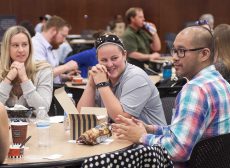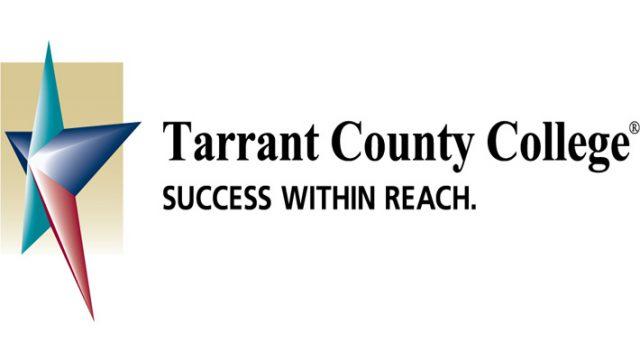By Anne Francomano/ tr news editor

Veterans along with TCC, TABS and early college high school students received a taste of the future March 24 on TR Campus.
The second annual Converge Conference and Expo introduced the realization of a 3-D-printed trachea, a gamer-developed virtual factory and a graphics simulation of warfare missile equipment in action.
Mathew Varkey, a research fellow at the Wake Forest Institute of Regenerative Medicine, provided guidance and entertained questions from students in a breakout session.
“To build your skill set for the future, you always have to go with an open mind, observing as much as possible from wherever you are,” he said.
Varkey listed eight key fields related to health care and 3-D printing: artificial intelligence, virtual reality/augmented reality, biotechnology, the Internet of Things, materials science, quantum computing, energy storage and robotics. On the surface, each field seems to stand alone, but there are similarities about how things are done in each field, he said. One common thread is mathematics.
“Mathematics is the handmaid of all sciences,” he said. “That’s what helps interpret everything else.”
Varkey also emphasized the critical role of 3-D printing technology.
“We are at the cusp of having the next industrial revolution,” he said. “3-D printing technology is helping to launch that.”
Randy O’Neal, vice president of production operations for Lockheed Martin missiles and fire control, discussed the acceleration of change, specific technology areas on which surviving companies are focused and Lockheed Martin’s steps to embrace them.
“We get insights by looking elsewhere, where other companies are placing their future bets and how it intersects our company,” he said.
O’Neal cited four fast-growing emerging technologies: AI, robotics and automation, 3-D printing manufacturing and network sensors.
“We recognize what we are good at and acquire or partner with what we are not good at and now can have a disruptive capability,” he said.

Photos by Peter Matthews/The Collegian
In his keynote address, Varkey gave an overview of the bio-printing process, walked through examples of how different tissue types are being worked with toward developing entities such as a trachea, tooth and ear and discussed bio-printing’s future use in six primary areas: drug discovery and development, toxicology, cosmetics, cancer treatment, wound healing and organ transplantation.
Bio-printing can help serve as a better predictive model by using human cell and tissue, Varkey said.
“By printing tumor-specific models taken from the patient, then we can see how the tumor responds to a treatment,” he said.
While some NE students attended the event for a chemistry class, biology major Jerrod Stone was keen on meeting a member of this particular Wake Forest research team.
“I am here to see Dr. Varkey,” he said. “I saw the research group’s director’s TED Talk three years ago, and it is the reason I re-enrolled in biology.”
NE student Joan Garcia received the TCC Travel Award from the NE STEM Task Force and funded by the TCC Foundation. He will participate in Wake Forest’s one-week Regenerative Medicine Essentials course and hands-on workshop this summer. Alexis Anttila was named runner-up and alternate, and Elier Gonzalez was recognized as a top-three finalist.





























